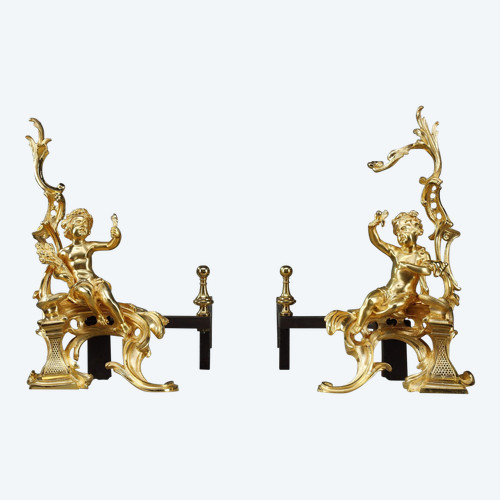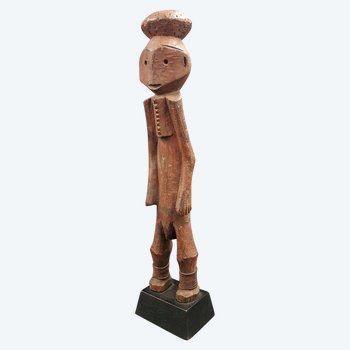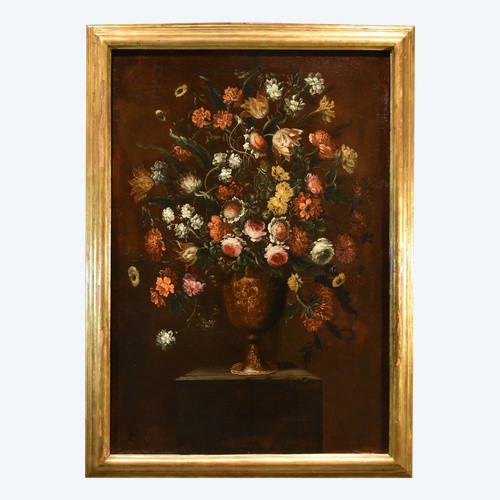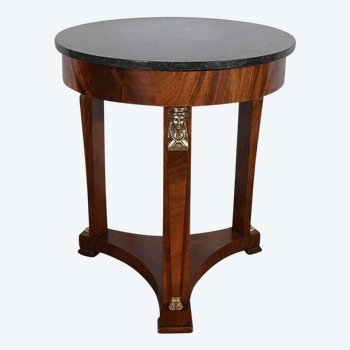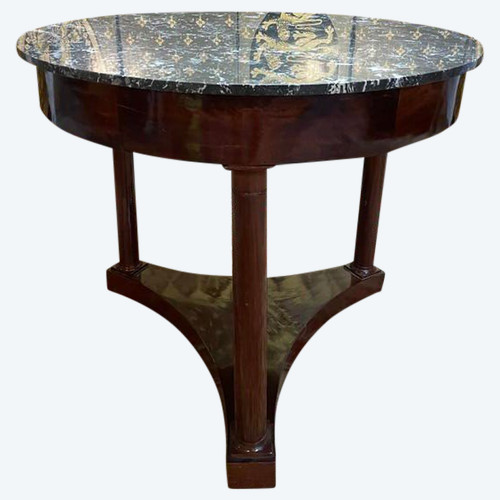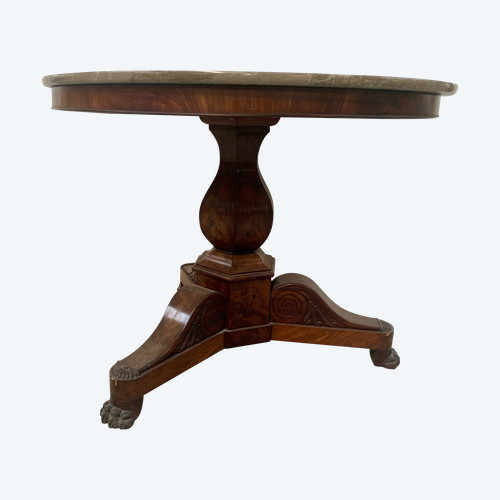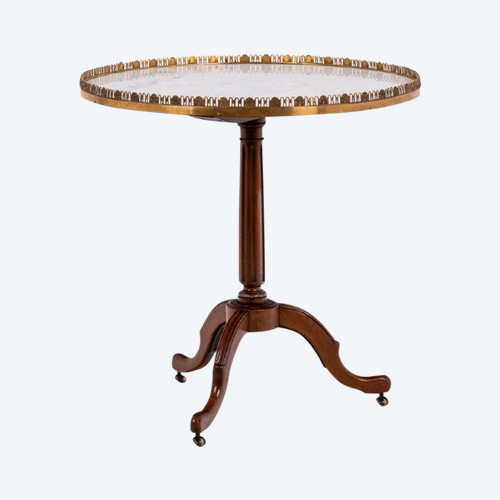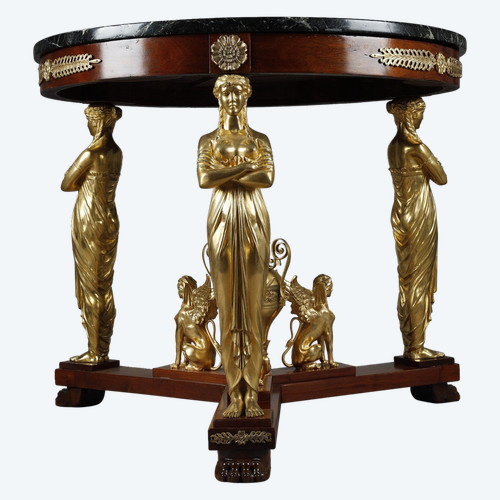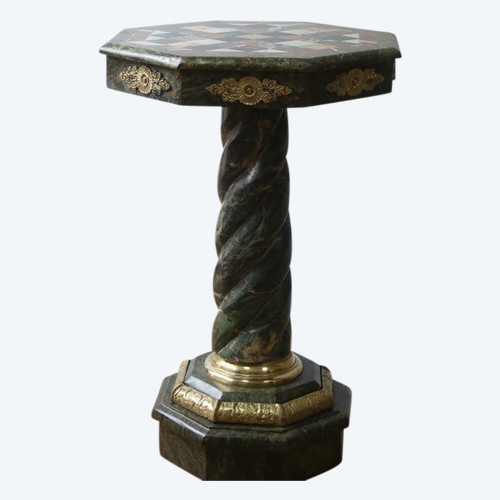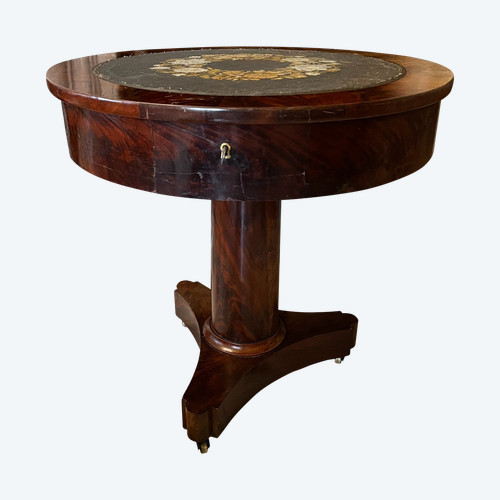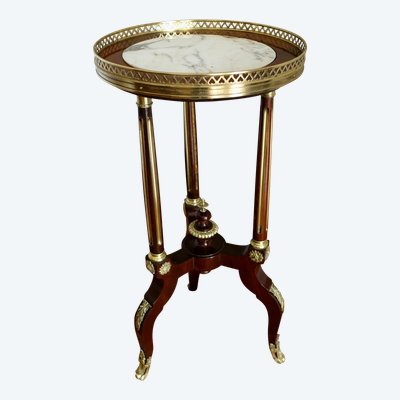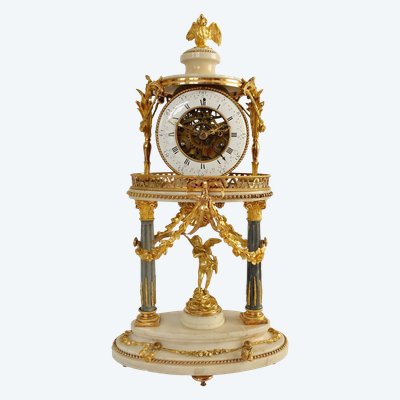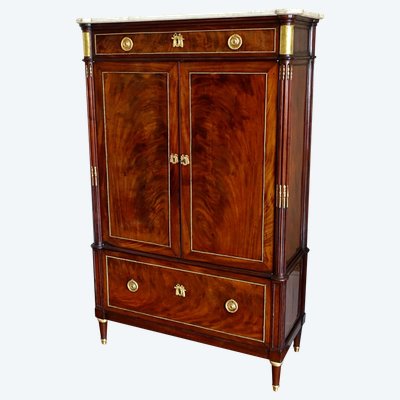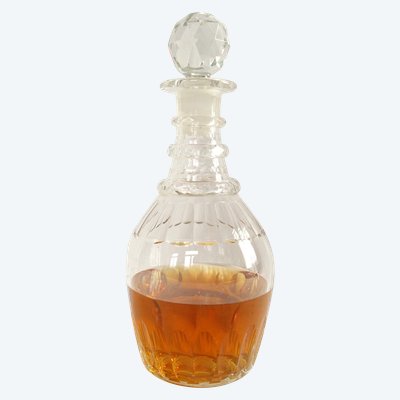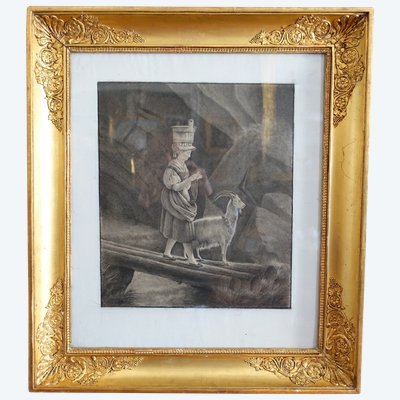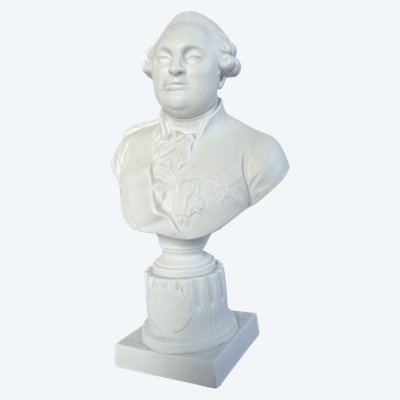This description has been translated and may not be completely accurate. Click here to see the original
Mahogany veneered tripod pedestal table with sea-green marble top resting on 3 mahogany legs with bronze patina and griffin heads ending in lion claws. An intermediate shelf at the crotch. Fine Parisian production from the end of the Directoire or Consulate period, circa 1795-1800, in the style known as Retour d'Egypte, fashionable at the very end of the 18th century and in the 1800s.
This style is the "antechamber" to the Empire style: it is still borrowed from the 18th century, and is resolutely turned towards antiquity with an archaeological bent. Our pedestal table is produced in the style of Bernard Molitor, who produced a number of models with similar lines and a smaller spacer top. The elegance of the lines, the quality and nervousness of the carving are the signature of a great master. Our piece is not stamped, but this attribution is possible.
Bernard Molitor (1755 - November 17, 1833) - cabinetmaker in Paris, mastered on October 26, 1787. Molitor quickly became one of Paris' leading cabinetmakers, receiving court commissions as early as 1788. Thierry de Ville d'Avray, general commissioner of the Garde Meuble de la Couronne, was seduced by the austere elegance of Molitor's work, and was also keen to keep royal expenses down. A true innovator, Molitor was a precursor of the Empire style, and one of the main architects of the "Transition Louis XVI Empire" style.
From the end of the Louis XVI period, he heralded the Empire style by using on his refined furniture, adorned with bronzes, busts of Egyptian women, ivy-leaf motifs wrapped around detached columns, and friezes of stylized palmettes or winged griffins, which were to be widely used under the Empire. At the forefront of creation during the revolutionary period, he made it through without difficulty. In 1802, he transferred his workshops to rue Saint-Honoré, then, under the Empire, to boulevard de la Madeleine. Molitor continued his career until the Restoration, enjoying great success even though he did not receive any major commissions from the Emperor or the Court. He ended his life near Fontainebleau, where he died in 1833.
This format of small pedestal table, very practical to place anywhere, is rare in these dimensions.
It is in perfect condition, re-varnished with a new stamp.
Height: 72.5cm
Diameter: 57cm
Ref: 6YVSXBU6ML
 Louis Majorelle Art Nouveau showcase
16.800 € EUR
Louis Majorelle Art Nouveau showcase
16.800 € EUR


